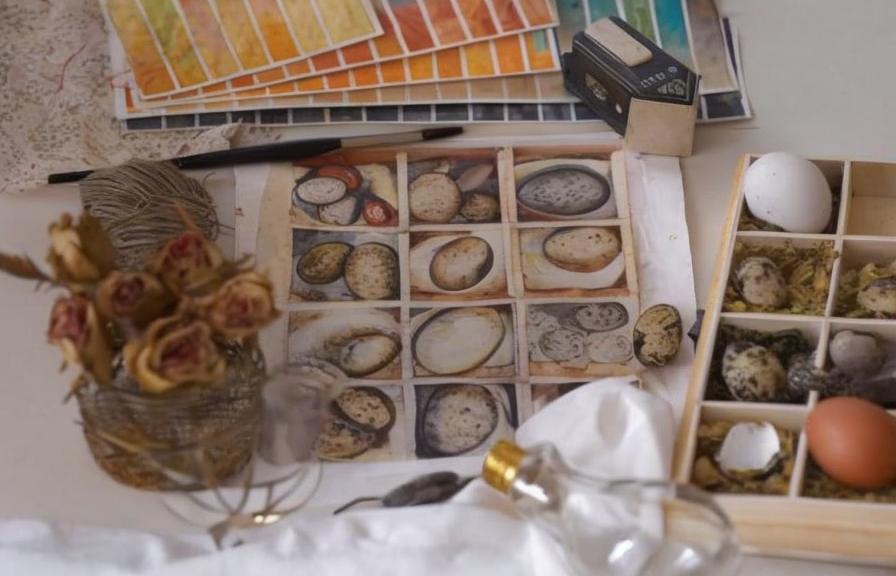Keeping quail and chickens together can be a rewarding experience for poultry enthusiasts. Both quail and chickens are popular choices for backyard farming, and when kept together, they can complement each other in various ways. Quail are known for their small size, gentle nature, and ability to lay eggs prolifically, while chickens are larger, more social birds that also provide eggs and meat. By keeping these two types of birds together, you can create a diverse and productive flock that offers a range of benefits. However, it’s important to understand the differences between quail and chickens, create a suitable environment for them, manage their feed and nutrition, address potential health and safety concerns, and observe their behavior and social dynamics in order to ensure their well-being and productivity.
Key Takeaways
- Keeping quail and chickens together can be a rewarding and efficient way to raise poultry for eggs and meat.
- Understanding the differences in behavior, diet, and space requirements between quail and chickens is crucial for successful cohabitation.
- Creating a suitable environment with separate areas for nesting, roosting, and dust bathing is essential for the well-being of both quail and chickens.
- Managing feed and nutrition for quail and chickens requires careful consideration of their specific dietary needs and access to appropriate supplements.
- Addressing potential health and safety concerns, such as disease transmission and aggression, is important for maintaining the overall health and welfare of the mixed flock.
Understanding the Differences Between Quail and Chickens
Quail and chickens have several key differences that need to be taken into consideration when keeping them together. Firstly, quail are much smaller than chickens, which means they require less space and can be housed in smaller enclosures. Additionally, quail are ground-dwelling birds that prefer to forage and nest on the ground, while chickens are more adept at perching and flying short distances. This means that the housing and environmental requirements for quail and chickens will differ. Furthermore, quail are known for their shy and skittish nature, while chickens are more social and assertive. This can impact their interactions within the flock and may require careful management to ensure that both species can coexist peacefully. Understanding these differences is crucial for creating a harmonious environment for both quail and chickens.
On the other hand, both quail and chickens share some similarities in terms of their dietary needs and egg-laying habits. Both species require a balanced diet that includes a mix of commercial feed, grains, greens, and protein sources. Additionally, both quail and chickens are prolific egg layers, with quail typically laying smaller eggs more frequently than chickens. By understanding these differences and similarities, poultry keepers can effectively manage the care and housing of both quail and chickens in a way that meets the needs of both species.
Creating a Suitable Environment for Quail and Chickens
Creating a suitable environment for quail and chickens involves providing appropriate housing, nesting areas, and outdoor space that meets the needs of both species. When it comes to housing, quail require smaller enclosures with plenty of ground space for foraging and dust bathing. Chicken coops, on the other hand, need to provide perches for roosting and nesting boxes for egg laying. It’s important to ensure that the housing for both quail and chickens is secure from predators and provides adequate ventilation and protection from the elements.
In terms of outdoor space, both quail and chickens benefit from access to a secure outdoor area where they can forage for insects, dust bathe, and soak up the sun. However, it’s important to provide separate areas for quail and chickens if they are allowed to free-range, as quail may be at risk of being bullied or trampled by larger chickens. By creating a suitable environment that meets the specific needs of both quail and chickens, poultry keepers can ensure that their flock remains healthy, happy, and productive.
Furthermore, providing suitable nesting areas is crucial for both quail and chickens. Quail prefer to nest on the ground in secluded areas, while chickens require elevated nesting boxes that provide privacy and protection for their eggs. By understanding these specific nesting preferences, poultry keepers can create an environment that encourages natural behaviors and ensures the well-being of both quail and chickens.
Managing Feed and Nutrition for Quail and Chickens
Managing feed and nutrition for quail and chickens involves providing a balanced diet that meets the specific needs of each species. Both quail and chickens require a mix of commercial feed, grains, greens, and protein sources to thrive. However, the nutritional requirements of quail differ from those of chickens in terms of protein content and vitamin supplementation.
Quail require a higher protein content in their diet to support their rapid growth and prolific egg laying. Additionally, quail benefit from vitamin supplementation to support their reproductive health and egg production. On the other hand, chickens have lower protein requirements but still need a balanced diet that includes grains, greens, and calcium sources to support their egg laying and overall health.
It’s important to provide separate feeding areas for quail and chickens to ensure that each species has access to the appropriate feed without competition or aggression. Additionally, offering a mix of commercial feed, grains, greens, and protein sources can help meet the nutritional needs of both quail and chickens. By managing feed and nutrition effectively, poultry keepers can ensure that their flock remains healthy, productive, and well-nourished.
Addressing Potential Health and Safety Concerns
When keeping quail and chickens together, it’s important to address potential health and safety concerns to ensure the well-being of both species. One potential concern is disease transmission between quail and chickens. While quail are generally more resistant to common poultry diseases such as coccidiosis and Marek’s disease, they can still carry and transmit these diseases to chickens. It’s important to practice good biosecurity measures, such as quarantining new birds before introducing them to the flock, regularly cleaning and disinfecting housing areas, and monitoring the health of all birds.
Another potential concern is aggression between quail and chickens. Chickens may bully or peck at smaller quail, leading to injury or stress. Providing separate areas for quail and chickens within the housing environment can help minimize aggression and ensure the safety of both species.
Additionally, ensuring that housing areas are secure from predators is crucial for protecting both quail and chickens from harm. Predators such as raccoons, foxes, and birds of prey pose a threat to both quail and chickens, so it’s important to use secure fencing, locks, and predator-proof housing to prevent attacks.
By addressing potential health and safety concerns proactively, poultry keepers can create a safe and healthy environment for both quail and chickens.
Observing Behavior and Social Dynamics

Observing behavior and social dynamics is crucial for understanding how quail and chickens interact within a mixed flock. Quail are known for their shy and skittish nature, while chickens are more social and assertive. When kept together, it’s important to observe how these two species interact to ensure that both are able to coexist peacefully.
In some cases, chickens may bully or peck at smaller quail, leading to stress or injury. Observing these interactions can help poultry keepers identify any issues early on and take steps to minimize aggression within the flock. Providing separate areas for quail within the housing environment can also help reduce stress and aggression.
Additionally, observing behavior can help poultry keepers identify signs of illness or distress in both quail and chickens. Changes in behavior such as lethargy, decreased appetite, or unusual vocalizations can indicate underlying health issues that require attention.
Understanding the behavior and social dynamics of both quail and chickens within a mixed flock can help poultry keepers create a harmonious environment that promotes the well-being of all birds.
Conclusion and Final Considerations for Keeping Quail and Chickens Together
Keeping quail and chickens together can be a rewarding experience that offers a range of benefits for poultry enthusiasts. By understanding the differences between quail and chickens, creating a suitable environment that meets the needs of both species, managing feed and nutrition effectively, addressing potential health and safety concerns proactively, and observing behavior and social dynamics within the flock, poultry keepers can ensure the well-being of both quail and chickens.
It’s important to provide appropriate housing, nesting areas, outdoor space, feed, nutrition, health care, safety measures, as well as observe behavior in order to create a harmonious environment for both species. By taking these considerations into account, poultry keepers can enjoy the unique advantages of keeping quail and chickens together while promoting the health, happiness, and productivity of their flock.
If you’re considering keeping quail and chickens together, it’s important to understand the dynamics of cohabitating these two bird species. A helpful resource on creating a suitable environment for both quail and chickens in your garden can be found in the article “Garden Chicken Coop” on PoultryWizard.com. This article provides valuable insights into designing a coop that accommodates both quail and chickens, ensuring their safety and well-being. Understanding the floor requirements for a chicken coop is also crucial, and the article “Floor of Chicken Coop” on PoultryWizard.com offers practical guidance on this aspect. Additionally, if you’re interested in hatching chicken eggs naturally, the article “How Long for Chicken Eggs to Hatch Naturally” on PoultryWizard.com provides essential information on the incubation process. These resources can help you make informed decisions when considering keeping quail and chickens together. (source)
FAQs
Can I keep quail and chickens together?
Yes, it is possible to keep quail and chickens together in the same coop or living space.
What are the considerations for keeping quail and chickens together?
When keeping quail and chickens together, it is important to consider the size of the living space, the temperament of the birds, and their specific needs for food, water, and nesting areas.
Do quail and chickens get along?
Quail and chickens can get along if they are introduced to each other at a young age and have enough space to coexist without feeling crowded or threatened.
What are the benefits of keeping quail and chickens together?
Keeping quail and chickens together can provide a diverse and interesting flock, as well as potential benefits for pest control and foraging.
Are there any potential drawbacks to keeping quail and chickens together?
Potential drawbacks of keeping quail and chickens together include the risk of disease transmission and the need to provide separate feed and water sources to ensure each species’ specific dietary needs are met.
What should I consider when introducing quail to an existing chicken flock?
When introducing quail to an existing chicken flock, it is important to monitor the birds closely for any signs of aggression or stress, and to provide plenty of hiding spots and separate feeding areas to minimize competition.
Meet Walter, the feathered-friend fanatic of Florida! Nestled in the sunshine state, Walter struts through life with his feathered companions, clucking his way to happiness. With a coop that’s fancier than a five-star hotel, he’s the Don Juan of the chicken world. When he’s not teaching his hens to do the cha-cha, you’ll find him in a heated debate with his prized rooster, Sir Clucks-a-Lot. Walter’s poultry passion is no yolk; he’s the sunny-side-up guy you never knew you needed in your flock of friends!







